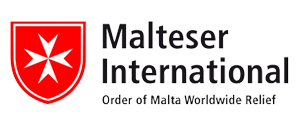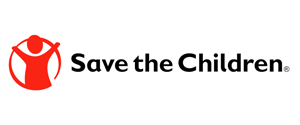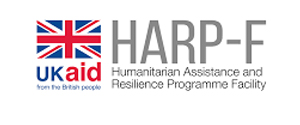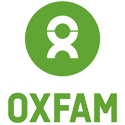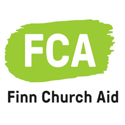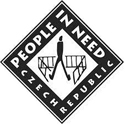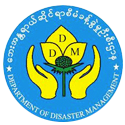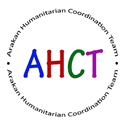Who We Are
Implementing Organization
Community Empowerment and Resilience Association (CERA)
Rationale
According to the Coastal Community Resilience Study by Malteser International in collaboration with the Asian Disaster Preparedness Center (ADPC), in the coastal communities in Rakhine, people are found troubled with their immediate hazards and their impacts. Hazards such as cyclones and storm surges are prime hazards but people are also living with host of secondary hazards such as floods, inundations (in some areas water-logging), coastal erosions, salinity and so forth. People’s most common livelihoods vis-a-vis their livelihood activities such as small scale farming, casual labour’s, fishing etc. are getting vulnerable on a regular basis. Within the households several socially vulnerable groups are also regularly affected such as persons with disability, elderly people, women and children in various different magnitude and contexts.



It was found that at the community, people are facing noticeable changes in climate and weather by observing variable temperature and rainfall. People articulated that the seasons are now behaving (starting and ending) differently than their past experiences. These changes are also affecting their regular livelihood activities. Increase number of the cyclones and strong winds in past few decades has also made significant damages to their life, livelihoods and assets on a regular basis. These have created additional pressures to their economy, natural resources (hence more extraction of coastal resource base) and communal peace and tolerances. Socially vulnerable groups are also having difficulties to access the regular needs of life and this becomes aggravated in the aftermaths of any disasters at the communities. Coastal communities thereby gradually getting increased exposure to the changing patterns of coastal hazards (due to variable or changing climate), increased social pressures and disparities in communal orders through a mixed but linked context.
This proposed project will address the expressed ‘immediate’ community resilience elements which are often nested within the disaster risk management domains ranging from early warning systems, emergency response, disaster recovery etc. Together with MERN, initiatives will complement for ‘longer term’ resilience elements associated to the elements such as sustaining.
Implementing Organization
After the riots in March 2014, the option of forming a local non-government organization or a community-based organization comprising of Malteser DRR team members was deemed the best option for reprogramming. After a two-day reprogramming workshop facilitated by the Malteser International Country DRR Coordinator (CDRRC) in July 2014, the participants decided to form the Community Empowerment and Resilience Association (CERA).
CERA’s applies two approaches in its initiatives. Track 1 is community empowerment which refers to the process of enabling communities to increase control over their lives. “Communities” are groups of people that may or may not be spatially connected, but who share common interests, concerns or identities. These communities could be local, national or international, with specific or broad interests. ‘Empowerment’ refers to the process by which people gain control over the factors and decisions that shape their lives. It is the process by which they increase their assets and attributes and build capacities to gain access, partners, networks and/or a voice, in order to gain control. “Enabling” implies that people cannot “be empowered” by others; they can only empower themselves by acquiring more of power’s different forms (Laverack, 2008). CERA believes that community empowerment, therefore, is more than the involvement, participation or engagement of communities. It implies community ownership and action that explicitly aims at social and political change.
Moreover, Track 2 involves community resilience. CERA concurs that resilience means the ability of a system, community or society exposed to hazards to resist, absorb, accommodate to and recover from the effects of the hazard in a timely and efficient manner, including through the preservation and restoration of its essential basic structures and functions (UNISDR).


Resilient communities minimize any disaster’s disruption to everyday life and their local economies. Resilient communities are not only prepared to help prevent or minimize the loss or damage to life, property, and the environment, but they also have the ability to quickly return citizens to work, reopen businesses, and restore other essential services needed for a full and timely economic recovery.
CERA’s approach to resilience is to provide the communities with tools to enhance their adaptive capacity. In a crisis situation, that capacity declines at a rate and to a depth that is largely dependent upon the nature of the disruption, the community’s level of preparedness for that specific disruption, the effectiveness of that response, and rapidness to recover.
CERA staffs are formerly DRR staff from Malteser International based in Rakhine. They strongly equipped with technical DRR knowledge, who have implemented two rounds of DIPECHO projects and other BMZ project initiatives.
In 2035, to be a leading local non-government organization in reducing disaster risks and promoting community resilience in Myanmar.
Our Vision
Mission
CERA supports long-term and future-oriented development by combining short-term relief measures with a holistic and sustainable approach in the following areas:
- Providing emergency relief after disasters, helping communities rebuild and recover;
- Enhancing coastal zone management through mangrove reforestation and other related environmental protection activities; and
- Reducing the risks of disasters, especially at the community level.
- Access safe water and supports comprehensive WASH infrastructure in community;
- Raising awareness session from various components after engaged with stakeholder/actors in different layout;
- Provision of nutrition awareness raising, promote hand washing practices, hygiene & sanitation, included IYCF practices and IMAM components through child survival, lifesaving, referral services cause malnutrition children and livelihood opportunity for family member complementarily that reduce malnutrition and socio-economic problems;
- Promoting women empowered through capacity strengthen and boost income opportunity effectively and raising GBV awareness to mitigate and prevention serious cases in community level; and
- Delivering emergency response activities, impact of conflict-affected communities and epidemic/pandemic.




